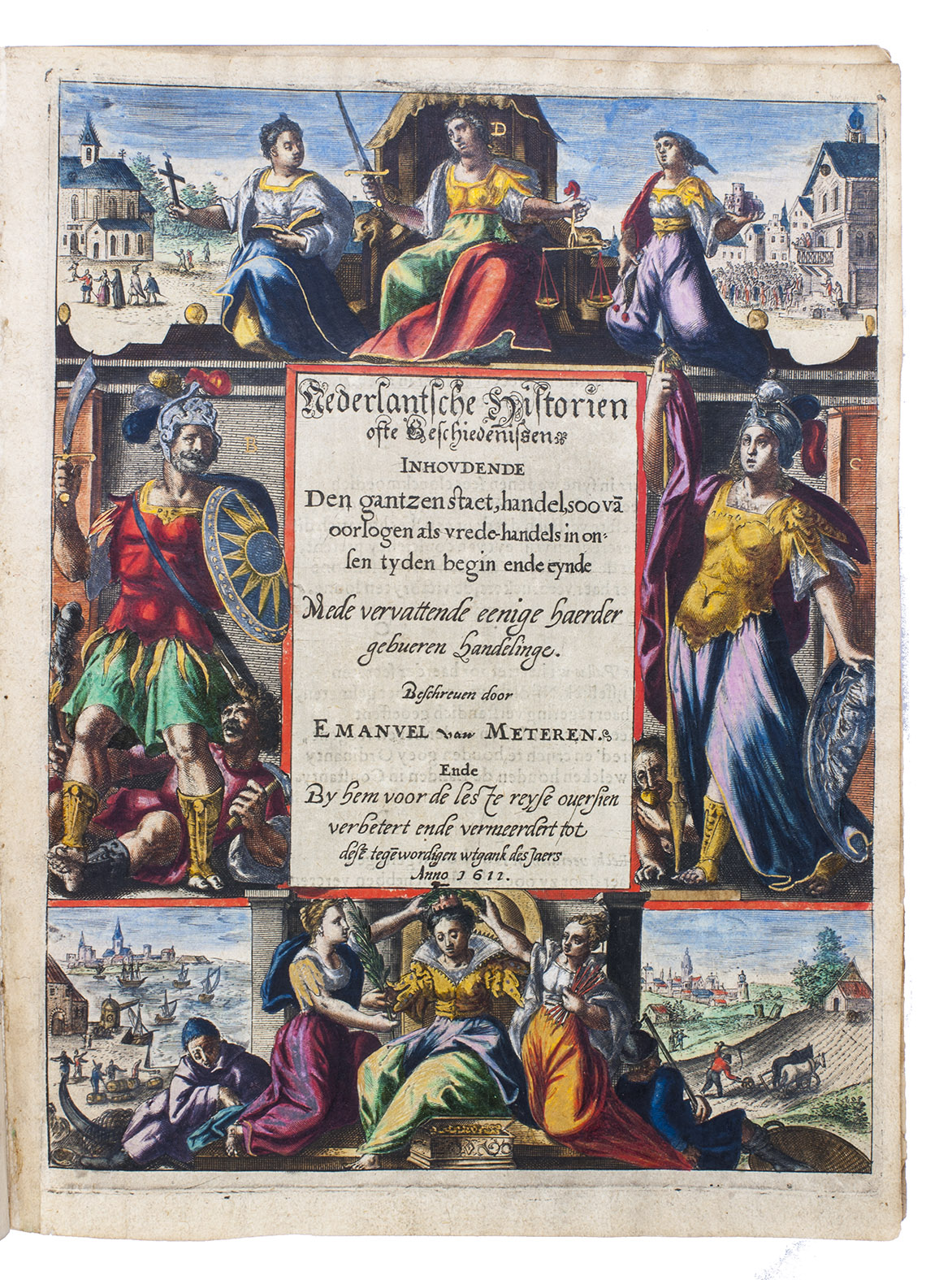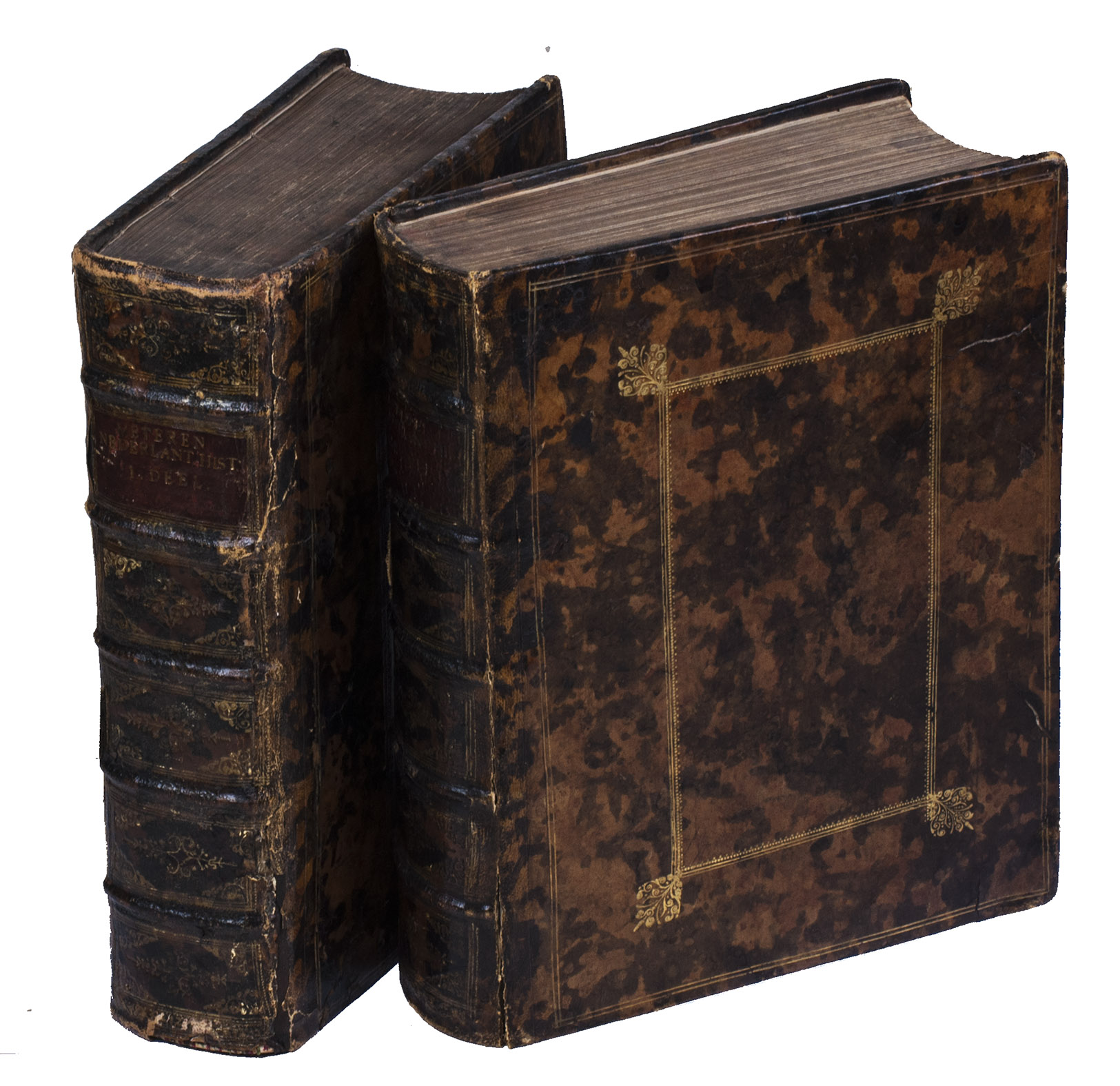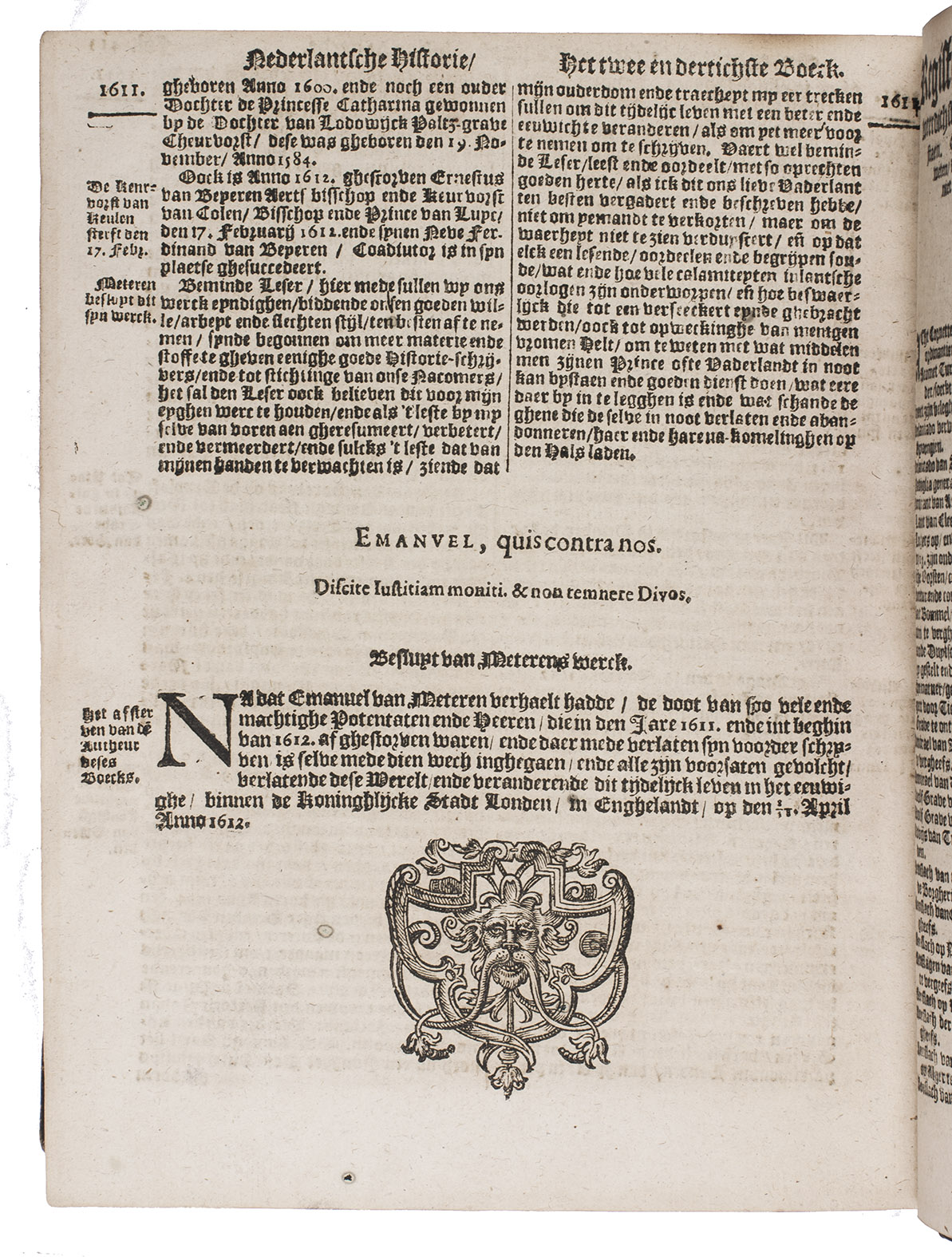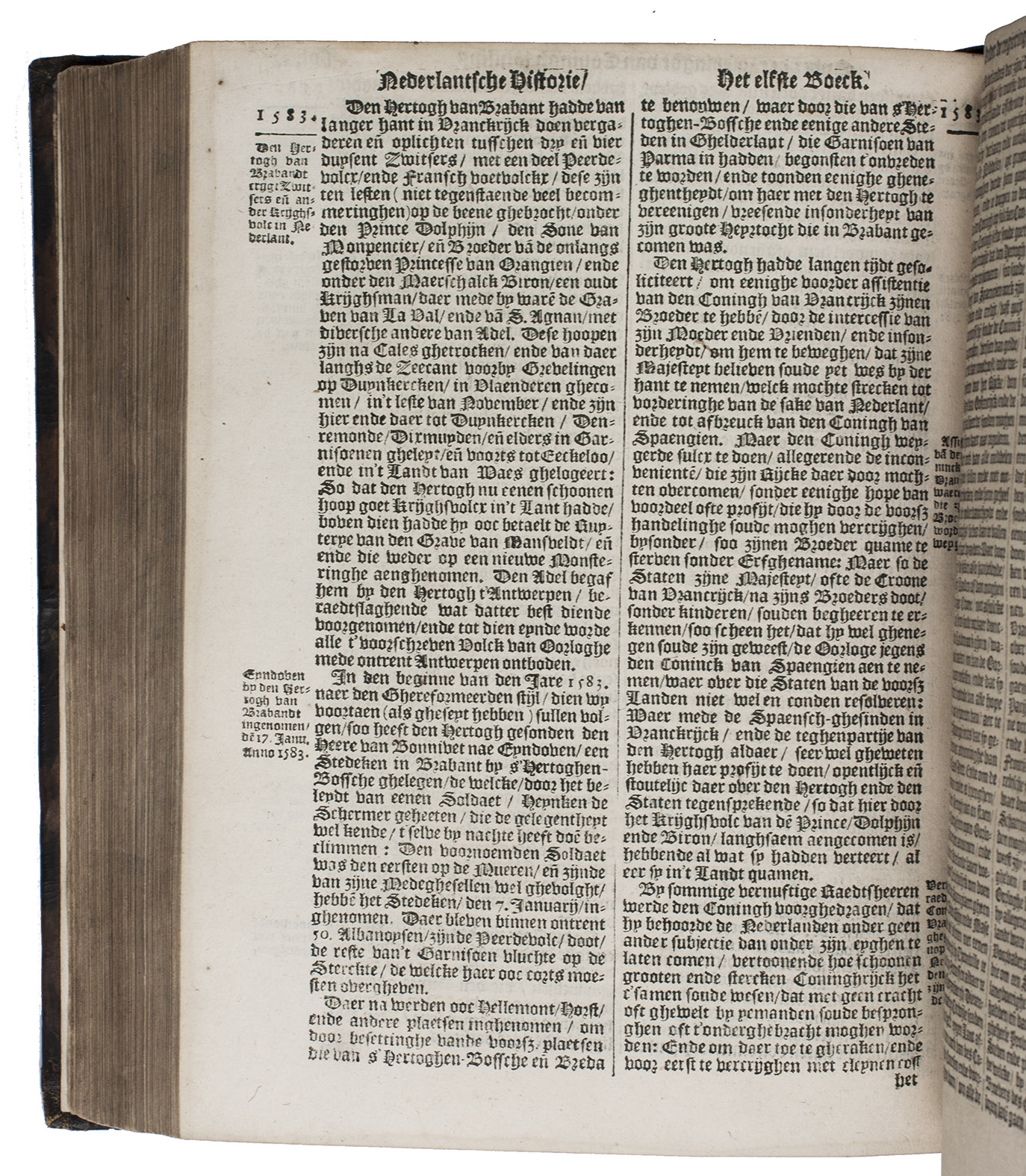METEREN, Emanuel van.
Nederlantsche historien ofte geschiedenissen inhoudende den gantzen staet, handel, soo va[n] oorlogen als vrede-handels in onsen tyden begin ende eynde ... Mede vervattende eenige haerder gebueren handelinge. ... oversien verbetert ende vermeerdert tot dese[n] tege[n]wordigen wtgank des jaers anno 1611.
Including (vol. 2): Belgische ofte Nederlantsche oorlogen ende gheschiedenissen beginnende van t'jaer 1595 tot 1611, ... oversie[n] verbetert e[n]de vermeerdert ...
[Copy imprint to vol. 2:] "Schotland buyten Danswyck" [= Amsterdam], "Hermes van Loven" [= Nicolaes III Biestkens?] for the author, 1611 [-1612]. 2 volumes. 4to. With 2 engraved title-pages, both coloured and highlighted in gold by an early hand. Further with a full-page engraved portrait of Van Meteren, and 21 smaller woodcut portraits in the text attributed to Christoffel van Sichem. Mottled, gold-tooled calf (ca. 1665), gold-tooled spines, 18th-century(?) gold-tooling on the boards. [6], 568, [20]; [2], 118, [4], 413, [10] ll.
€ 12,500
Extremely rare last and most complete issue of the 1611 4to edition (incorporating the author's last additions to early 1612) of a cornerstone of Dutch historiography, covering the history of the Low Countries from 1369 to early 1612, with a strong emphasis on contemporary history, especially the Eighty-Years War for Dutch independence from Habsburg Spain: "What the States Bible was for religion and Cats for literature, Van Meteren was for our historiography for a whole century" (Van der Heyden quoting Brummel). Emanuel van Meteren (1535-1612), a Dutch Reformed eye-witness to many of the events, took great care to uncover the facts and present them as objectively as possible, without polemics, something that brought him the wrath of both the Spanish court and the Dutch States General. He also wrote while the war was raging, leading him to continue revising and especially updating his text from the first authorized edition in 1599 to his death in 1612. This combined with the extremely complicated publishing history of his politically controversial book to generate a wide array of editions and issues that still demand further study.
The present last and most extensive issue of the 4to edition includes material not found in the earlier editions. Van Meteren's personal note about his approaching death makes it clear that it comes from the author in one way or another, and the events to 17 February 1612, Van Meteren's closing note and the note of his death were included (with somewhat different wording) in the authorised folio edition of 1614 edition. Unfortunately, beginning with that 1614 edition, Van Meteren's work was censored to appease the States General, so the present issue makes important contributions to the history of Van Meteren's text: as far as is known it is the first edition to include his last additions, and the last edition before his work was censored.
Typographically, the most remarkable feature of the present edition is the introduction of a new style of textura gothic type that was to set the standard for the Republic's texturas, used at this time for most works in the Dutch language. Most of the book is set in the 16th-century Descendiaen textura cut by Hendrick van den Keere in Ghent. But in volume 1, beginning with 4 pages in quire 2A, a new Descendiaen textura appears , clearly modelled on Van den Keere's but with baroque curls added to several of the letters and a few other distinguishing features. The old and new type appear together not only in the same quire or sheet, but even in the same forme. The printing office apparently acquired the new type while the book was in press but continued using the old one as well. The 6-line note of Van Meteren's 1612 death is set in a slightly larger Mediaen size in the new style, also its earliest known use. These new types of the 1610s served as the models for the textura types of Christoffel van Dijck and directly or indirectly for nearly all textura types of the Dutch Republic up to and including those of Fleischman in the 1740s and beyond. While the book's printer certainly had no symbolic significance in mind, it seems poetically appropriate that he set this great work about the birth of the independent Dutch Republic in the first printing type to establish an independent style for the Dutch golden age.
The two title-pages have been interchanged, probably when the binding was revised and repaired. With some browning, a few tears (minor except vol. 2, part 2, 3O2), the running heads of about 4 leaves very slightly shaved and a few minor marginal water stains, but still generally in good condition. The bindings were repaired and revised at an early date, but have since developed some cracks in the hinges, and the mottling of the calf has caused some cracks and flaking, but they are otherwise in good condition. Very rare last issue, with additions and revisions of the first complete 4to edition of a great historical chronicle of the Netherlands at the dawn of it golden age.
Even more extensive description available on request KVK & WorldCat (3 copies); STCN (1 of the same 3 copies); cf. De Buck 2295; Van der Heyden, "Emanuel van Meterens History ...", in: Quaerendo XVI (1986), pp. 3-29; J. Gerritsen, "Emanuel van Meteren's Commentariën and STC", in: Quaerendo XXX (2000), pp. 35-50; Sloos 12022.
Related Subjects:





